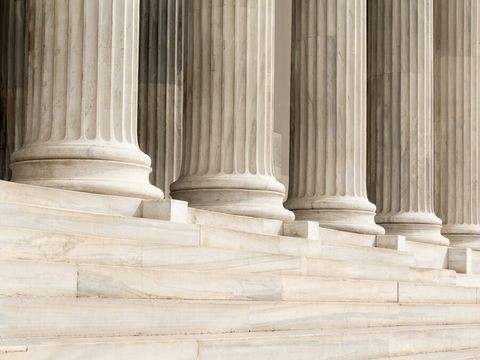New Jersey Adopts the Uniform Trade Secrets Act
Client Alert | 1 min read | 01.31.12
On January 9, 2012, Governor Chris Christie signed into law the New Jersey Trade Secrets Act ("NJTSA"), which is modeled after the Uniform Trade Secrets Act ("UTSA"). New Jersey joins 45 other states and the District of Columbia in enacting a trade secret statute modeled on the UTSA.
The NJTSA generally follows the UTSA, but with a few key differences.
- The NJTSA defines a "trade secret" more broadly than the UTSA, and extends protection to various other forms in which trade secrets can exist, including a "design, diagram, drawing, invention, plan, procedure, [or] prototype."
- The NJTSA augments, rather than displaces, New Jersey common law remedies for misappropriation of a trade secret.
- The NJTSA is silent as to whether courts must seek uniformity with other states applying the UTSA.
- The NJTSA provides greater clarity about the conduct that may give rise to a trade secrets claim, by expressly distinguishing between "proper" and "improper" means of obtaining trade secrets. Under the NJTSA, acquiring a trade secret by independent invention, reverse engineering, a license, published literature, or public observation is a complete defense.
- The NJTSA provides a presumption in favor of granting protective orders to preserve the secrecy of an alleged trade secret during litigation.
Only four states remain without a statute modeled after the UTSA – Massachusetts, North Carolina, New York, and Texas.
Contacts
Insights
Client Alert | 5 min read | 12.12.25
Eleventh Circuit Hears Argument on False Claims Act Qui Tam Constitutionality
On the morning of December 12, 2025, the Eleventh Circuit heard argument in United States ex rel. Zafirov v. Florida Medical Associates, LLC, et al., No. 24-13581 (11th Cir. 2025). This case concerns the constitutionality of the False Claims Act (FCA) qui tam provisions and a groundbreaking September 2024 opinion in which the United States District Court for the Middle District of Florida held that the FCA’s qui tam provisions were unconstitutional under Article II. See United States ex rel. Zafirov v. Fla. Med. Assocs., LLC, 751 F. Supp. 3d 1293 (M.D. Fla. 2024). That decision, penned by District Judge Kathryn Kimball Mizelle, was the first success story for a legal theory that has been gaining steam ever since Justices Thomas, Barrett, and Kavanaugh indicated they would be willing to consider arguments about the constitutionality of the qui tam provisions in U.S. ex rel. Polansky v. Exec. Health Res., 599 U.S. 419 (2023). In her opinion, Judge Mizelle held (1) qui tam relators are officers of the U.S. who must be appointed under the Appointments Clause; and (2) historical practice treating qui tam and similar relators as less than “officers” for constitutional purposes was not enough to save the qui tam provisions from the fundamental Article II infirmity the court identified. That ruling was appealed and, after full briefing, including by the government and a bevy of amici, the litigants stepped up to the plate this morning for oral argument.
Client Alert | 8 min read | 12.11.25
Director Squires Revamps the Workings of the U.S. Patent Office
Client Alert | 8 min read | 12.10.25
Creativity You Can Use: CJEU Clarifies Copyright for Applied Art
Client Alert | 4 min read | 12.10.25
Federal Court Strikes Down Interior Order Suspending Wind Energy Development



